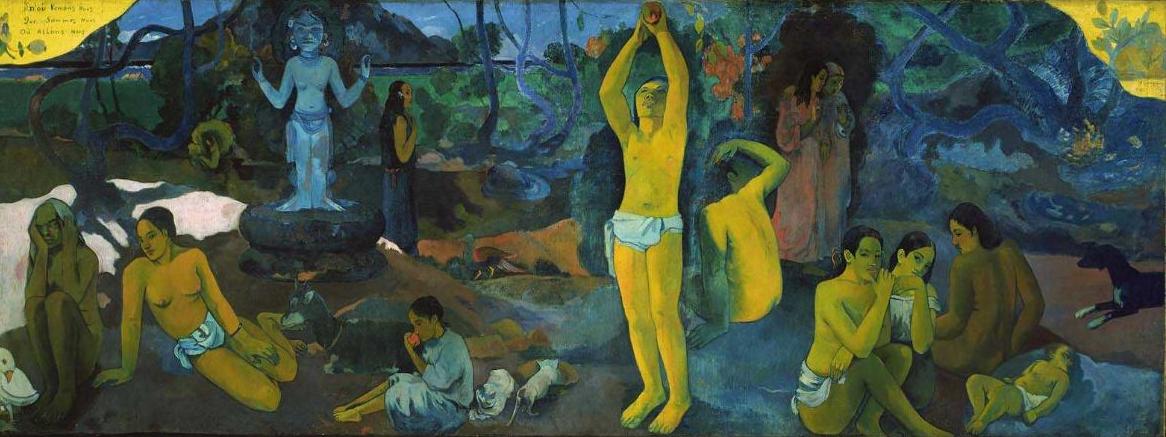she said: well, if you are so unhappy about exploitation of poor workers, why don't you do something about it? so i tried to explain to her that this is what i try to do -in my way, which is the only way that i see myself capable of keeping up over the years. which means talking about it, writing about it, painting and drawing about it...although most of my drawings and paintings approach the subject from the other way round: i try to portray how the world would look if we concentrate on a 'spiritual' interaction (compassionate, mild, respectful, you get my drift). and of course i have been buying fair trade as much as i can, for a very long time.
which brings me to another aspect of this thread which has been going on for quite some posts now: societal criticism in art. the theme of societal criticism has been around for centuries in art. a 19th century example:

jean-françois millet the gleaners (les glaneuses, 1857, musée d'orsay, paris, click for enlargement)
we see three gleaners: poor women, who when the wheat had been harvested scoured the land for the remaining stalks and ears. The so prominent display of the poorest of the population was seen by many as an indictment of poverty and exploitation of the workers. from wikipedia:
Millet first unveiled The Gleaners at the Salon in 1857. It immediately drew negative criticism from the middle and upper classes, who viewed the topic with suspicion: one art critic, speaking for other Parisians, perceived in it an alarming intimation of "the scaffolds of 1793."[1] Having recently come out of the French Revolution of 1848, these prosperous classes saw the painting as glorifying the lower-class worker.[1] To them, it was a reminder that French society was built upon the labor of the working masses, and landowners linked this working class with the growing movement of Socialism and the dangerous voices of Karl Marx and Émile Zola.[2]millet was a big source of inspiration for vincent van gogh:
One critic commented that "his three gleaners have gigantic pretensions, they pose as the Three Fates of Poverty…their ugliness and their grossness unrelieved."[3] While the act of gleaning was not a new topic—representations of Ruth had already been composed—this new work was a statement on rural poverty and not Biblical piety:[3] there is no touch of the Biblical sense of community and compassion in contrast of the embodiments of grinding poverty in the foreground and the rich harvest in the sunlit distance beyond. The implicit irony was unsettling.

vincent van gogh, the potato eaters (1885, Van Gogh Museum Amsterdam, click for enlargement)
$$$$$$
let me add a drawing which i made yesterday, after having had this discussion. i don't think it's my best work...since my subconscious seems to work better on its own, without a directive from my mind. but i do have enough image-creating experience to get things done, visually speaking. however, i'm left with a low expectation that any of my art works will really have an impact on this persistent problem of greed, wealth, uneven distribution of resources,...human nature you could say. you may call me negative for stating this. but i think we need this negativism in order for anything to change. much of the so-valued 'positivism' in my eyes serves to maintain a status quo which is decidedly injust on a global scale.

we trample on them, to maintain our luxury (own work, 2012, 21 x 30 cm, click on the image for an enlargement)























